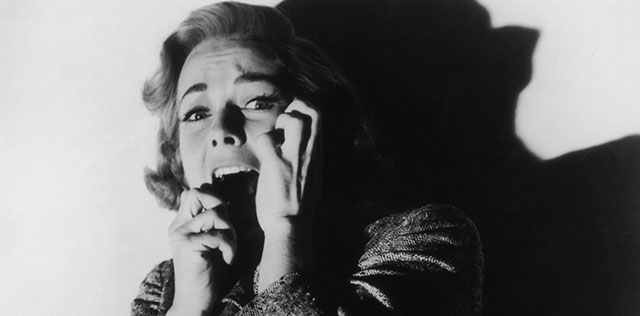
Halloween is on the horizon, and Halloween Kills is on release now in Cineworld. So prepare to be scared with our essential list of the jumpiest moments in horror movie history.
We're spanning the breadth of cinema, from early classics to the present day, to present those moments that offer a delightfully powerful moment of shock. Are you brave enough to watch all of the following
1. Cat People (1942)
Produced by Val Lewton and directed by Jacques Tourneur, Cat People is a textbook example of understated menace, using shadowy cinematography to suggest evil at the edge of the frame. Owing to the strict production code of the day, the film is prevented from showing us too much. But the tacit suggestion of its central conceit, that of feline metamorphosis, keeps us off-balance throughout. And there's at least one fine moment of visceral shock when a character perceives herself to be pursued, only to catch her breath and completely lose it when a bus suddenly lurches into view. It's widely credited as the first movie jump scare and remains effective in its simplicity.
2. Psycho (1960)
Alfred Hitchcock's seminal horror practically gave birth to the modern slasher movie, and that notorious shower scene has carved its way into the collective consciousness. Hitchcock's sordid study of voyeurism, necrophilia (inspired by the true story of Ed Gein) and the diabolical 'Mother', all lurking in and around the Bates Motel, scared up a box office sensation back at the start of the 1960s. But the most alarming scene remains the death of unsuspecting private investigator Arbogast (Martin Balsam) whose ill-fated introduction to Mother coincides with those unmistakeable, stabbing Bernard Herrmann strings.
3. The Texas Chainsaw Massacre (1974)
Tobe Hooper's grungy shocker has a raw, dirty visual aesthetic and a distorted, mechanical soundtrack, all the better for immersing one in the disturbing story of Leatherface and his family. Again inspired by the legacy of Ed Gein, The Texas Chainsaw Massacre remains one of the most controversial horror films of all time, throwing logic to the wind and instead injecting pure, intravenous terror into our veins. Key to its impact is the build-up: there's minimal gore, but Leatherface's presence is steadily established, most horribly in the moment where Sally (Marilyn Burns) sees her wheelchair-bound brother Franklin fall foul of the psychotic cannibal. Even today, it's lost none of its ability to shock.
4. Jaws (1975)
It's not, strictly speaking, a horror film, but Jaws unleashed a host of memorably terrifying moments upon audiences the world over. Steven Spielberg's killer shark creature feature, adapted from Peter Benchley's novel, is credited with kick-starting the summer blockbuster. Defying its on-set problems to emerge as a sophisticated shocker, largely due to the driving power of John Williams' Oscar-winning score, Jaws was a sensation on its release. An unprecedented marketing blitz guided it towards the status of the most successful film of all time (until it was surpassed by Star Wars two years later). But away from that, the film has lost none of its impact, particularly the Ben Gardner head-in-the-boat scene, shot after principal photography had finished because Spielberg, by his own admission, "got greedy" and wanted one more scare. There's no denying it worked.
5. Carrie (1976)
Stephen King's debut novel Carrie prompted a full-blooded, emotive adaptation from master stylist Brian De Palma. This story of a young clairvoyant teen, tormented by school bullies and her own religious fanatic mother, scares and moves in equal measure. This is largely down to Sissy Spacek's intuitive, heart-rending central performance as the vulnerable girl headed towards a date with a bucket of pig's blood. In the aftermath of the famous prom massacre scene, one might imagine the film has little more shock value left. But the climactic dream sequence in which Carrie's hand shoots out of her grave is a fabulously scary note on which to end this fine King adaptation.
6. Alien (1979)
Ridley Scott's seminal sci-fi horror Alien was groundbreaking in so many ways, from the elegance of its design to the lifecycle of its biomechanical monster, designed by H.R. Giger. The presence of Sigourney Weaver's resourceful Ripley, meanwhile, broke down gender norms in a largely male-dominated genre. Away from the more famous set-pieces like the grisly chest-burster, there are moments of tangible fright. One of the best-timed scares comes with Ripley's apparent escape from the exploded towing vehicle Nostromo. Thinking she has dispatched the alien, she should really pay attention to that object shaped like a bulkhead...
7. The Shining (1980)
How many movies can scare us with the presence of a mere intertitle? Stanley Kubrick's adaptation of Stephen King's novel doesn't really go in for jump scares, instead favouring a disquieting, quiet atmosphere. This is accomplished through dreamy SteadiCam shots and the audacious decision to film the moments of fright in bright light. But the sudden presence of a title card saying 'Tuesday', co-ordinated with a discordant burst of music, is well capitalised to exploit our already-shot nerves. By this stage, the cabin fever felt by the central character Jack Torrance (Jack Nicholson) is starting to set in, and it only takes the simplest of devices to tip us over the edge into genuine fear.
8. Friday the 13th (1980)
Who was the killer in the first Friday the 13th movie? As the taunting Ghostface killer made clear at the start of Scream (1996), it wasn't, in fact, Jason Vorhees, but his mother. This low-budget slasher kicked off one of the most successful horror franchises of all time, but, ironically enough, its main icon is barely present in this first movie. Even so, the dreaded Jason lives up to his billing in one of the best jump scares of them all, plunging from the serene depths of Camp Crystal Lake to make his mark on horror history in a matter of seconds. It's a fine moment of misdirection and genuine terror in a movie that largely trades in gory thrills.
9. The Thing (1982)
By the mid-1980s, horror cinema was changing, responding to themes of body horror as the AIDS crisis became widely known. David Cronenberg's The Fly and, before that, John Carpenter's The Thing, explored the theme of bodily betrayal to especially terrifying effect. Carpenter's masterpiece, a remake of 1951's The Thing From Another World (itself adapted from the novella Who Goes There?), mixes icy Antarctic atmosphere with Rob Bottin's explosively gruesome, astonishing make-up effects to thoroughly unsettle an audience. It's the story of an alien organism that can perfectly replicate other beings, and the famous blood test scene does a masterful job putting us off the scent before launching in with the jump scare.
10. Poltergeist (1982)
Supernatural horror meets recognisable suburbia in this blockbusting amalgamation of visions. Tobe Hooper and writer/producer Steven Spielberg are both credited with helming this story of a young girl snatched by spirits through the family TV set. And there are trace elements of both filmmakers on the movie, with the nasty (men peeling off their own face) giving way to the wholesome (the nuclear American family bonding, E.T.-style, through trauma). Poltergeist's most frightening moment comes during a moment of apparent calm, when that sinister clown doll comes to life and initiates the effects-packed final reel. It remains a seminal haunted house movie.
11. The Exorcist III (1990)
It doesn't get the critical kudos of the first Exorcist movie, one of the most notorious and famous horrors of all time. But the third entry in the series can claim to have one of the best jump scares of them all. Adapted by William Peter Blatty from his own novel Legion, this movie criss-crosses the serial killer thriller with theological discussion on the nature of evil. However, its most famous scene remains that sudden moment of shock when a nurse meets a sticky end in a hospital corridor. It's perfectly established, held in a long shot for a disconcertingly long amount of time, background noise giving a sense of ambience and safety, before a sudden zoom and eruption of music sends us reeling. That statue shot immediately after is also a killer.
12. Candyman (1992)
Clive Barker's short story The Forbidden gave rise to this superior slasher thriller. Candyman draws on the power of mythology and urban legends, exploring the legacy of a supposed hook-handed killer who stalks the Chicago slums of Cabrini Green. When Virginia Madsen's grad student Helen begins investigating, she soon pays the price. Candyman's (the baritone-voiced Tony Todd) intrusion into Helen's life is brilliantly signalled during the apartment invasion scene, which begins with a supremely jumpy moment that asserts the presence of a truly frightening boogeyman. The Candyman sequel is coming in 2021, and we can't wait to see the end result.
13. Seven (1995)
As with Jaws, David Fincher's serial killer thriller Seven may not strictly fall within the horror genre. However, with its mouldering production design and grotesque central motivation, that of the seven deadly sins propelling a killer to sadistic acts, it remains one of the darkest movies of the 1990s. Brad Pitt and Morgan Freeman are the detectives on the trail of a twisted maniac, and midway through, their search takes them to the 'sloth' victim, horribly tortured for a year while fed intravenously with life-sustaining drugs. The moment where the SWAT team get close and realise the emaciated corpse is, in fact, still alive always sends hearts racing.
14. Scream 2 (1997)
Wes Craven's initial Scream movie galvanised the slasher genre. It did this by poking fun at the inherent conventions of such movies, populated as it was by characters keenly aware of serial killer behaviour. At the same time, this wasn't enough to save everyone from a grisly fate, allowing Craven to meld horror with the humour in deliriously entertaining fashion. The sequel makes things even more meta, as the return of the Ghostface killer appears to be prompted by Hollywood's reliance on sequels. The onset of the Gale Weathers (Courtney Cox) chase scene through the school is initiated by a jolting jump scare, reminding us that, in these movies, danger lurks everywhere. Scream 5 is on its way very soon.
15. Audition (1999)
Let's think outside of Hollywood for a change, focusing our attention on this truly unnerving Japanese cult classic. Director Takashi Miike is infamous for pushing the boundaries of taste and decency, and he does so memorably in Audition. It's a film of two halves, beginning as an apparently understated drama of romantic longing, before feeding in creepy imagery and eventually hitting us with a horrific finale. In fact, so uncomfortable is the ending that audiences were said to be vomiting and fainting in the aisles. The lead-in to this controversial climax is staggeringly well done, shifting our perception of the movie with little more than the sight of a sack rolling across a room. To begin with, we don't know why this is happening; we're just reeling from the shock. When we find out, it gets even worse.
16. What Lies Beneath (2000)
Robert Zemeckis' gleeful Hitchcock pastiche deploys the CG-assisted camera moves that the master could only have dreamed of. Michelle Pfeiffer plays Claire, the isolated wife in a Vermont lakeside house who begins to suspect that the property is haunted. Could this have anything to do with the legacy of her apparently perfect husband, Harrison Ford? The eventual twist to Ford's usually noble screen persona is shocking enough, but his character Norman gets his comeuppance when Claire finds unexpected supernatural assistance in the bathtub. The violent fright of this jump scare is well-assisted by Alan Silvestri's malevolent score, setting up a nail-biting endgame that leaves us suitably frazzled.
17. Mulholland Drive (2001)
Master surrealist David Lynch isn't usually one for jump scares. Instead, he prefers to blur the lines between reality and dreams, often showing us the ugliness that lurks behind the facade of daily life (see Blue Velvet or Twin Peaks as examples). That said, his acclaimed horror-fantasia Mullholland Drive contains at least one deliriously frightening moment of shock, made all the more clever by the fact that we're told what's going to happen. In this nightmarish study of the Hollywood dream factory, one man's seemingly innocuous dream about an encounter with a creepy, alley-dwelling individual soon spills over into reality. The subtly menacing sound design leaves our nerves shot way before the final reveal.
18. The Descent (2005)
Directed by Neil Marshall, The Descent illustrates that grandiose scares can be executed for very little money. In a film that cost around £5 million, we get the claustrophobia of being trapped underground meshed with the spectre of flesh-eating monsters, known as crawlers. It's more than enough to leave us all in an overwrought state of anxiety. The film also recognises that great horror stems from a character-driven emphasis, and each of the story's women spelunkers bring personal demons and skeletons in the closet to their subterranean battle. Even so, we're here for that mightily effective first reveal of the crawlers, teased via nightvision camera in a spectacularly well-timed moment.
19. Drag Me To Hell (2009)
Sam Raimi first made his mark on horror with the splatter-ific Evil Dead, released back in 1981. That movie fell foul of the UK's 'video nasties' scare, evoking, in equal measure, appalled laughter and gasps of disgust in its story of demonic possession. That enthusiasm is very much in evidence in Drag Me To Hell, which marked Raimi's horror return after three Spider-Man blockbusters. It's a classic campfire tale of a banker who spurns an elderly gypsy woman, prompting all kinds of OTT ooga-booga that's huge fun to watch. Raimi described it as a ghost train movie and that's definitely apt, with one particular jump scare in a shed appearing out of nowhere to knock our socks off.
20. Paranormal Activity 2 (2010)
The Paranormal Activity franchise is one of the most successful in the history of horror. Director Oren Peli's original movie, released in 2009, was made for peanuts but stormed to multi-million dollar grosses on the simple power of suggestion. Its found-footage aesthetic, dispassionately observing demonic happenings in one American couple's house, genuinely got under the skin of audiences, just like The Blair Witch Project did 10 years earlier. The series subsequently got more overwrought and ridiculous, but the kitchen explosion scene in the second movie is a welcome reminder that not all horror needs to take place in the shadowy recesses of the night.
21. The Conjuring (2013)
An entire 'Conjuring Universe' has been spun off this ghostly, James Wan-directed blockbuster. Having initiated the 'gore porn' cycle with the first Saw, Wan later decided to take things in less grisly, more supernatural direction with this and, prior to this, Insidious. Set in the 1970s, The Conjuring explores the real-life investigation into an apparently haunted Rhode Island farmhouse, undertaken by investigators Ed and Lorraine Warren (Patrick Wilson and Vera Farmiga). Before the film eventually goes overboard with its shrieking shocks, there are effective pleasures to be mined, particularly when mother Carolyn (Lili Taylor) is beset by a clapping ghost in the darkened basement.
22. It Follows (2015)
The spirit of John Carpenter pervades this lovingly retro chiller from writer-director David Robert Mitchell. Everything from the prowling camerawork to the appreciably squidgy score (from Disasterpeace) is designed to ape the aesthetic of Carpenter classics such as Halloween. But It Follows also scores big time with its central conceit, that of a sexually transmitted curse that can take on human form. Maika Monroe's central character is the unfortunate victim beset by implacable, slow-moving figures, and the appearance of the 'tall man' within her own house is a superbly terrifying moment. It goes to show that Mitchell has more in his arsenal than just bucketloads of style. He can also scare with aplomb.
23. IT: Chapter One (2017)
We conclude our list with a return to Stephen King territory. The first big-screen instalment of the IT saga remains the most successful horror film of all time, melding pure fright with a nostalgic story of small-town American innocence. A group of kids known as the Losers Club must band together to defeat the shape-shifting entity that is haunting each of them individually. This monster prefers the shape of a malicious clown known as Pennywise (played by Bill Skarsgard to genuinely disconcerting effect). Pennywise can practically go anywhere, as becomes clear during the projector scene which amplifies all of our primal nightmare fears about clowns.
Which of these scenes is your favourite movie jump scare? Did we miss out your favourite altogether? Let us know @Cineworld. And happy Halloween!
Looking for more horror content? 2025 sees the release of Robert Eggers' bone-chilling Nosferatu, starring Bill Skarsgard as the terrifying Count Orlok. Click the link below to find out more.
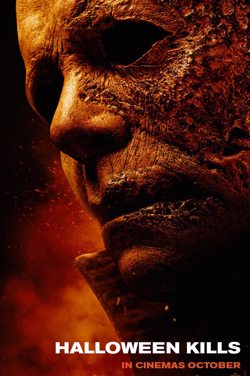
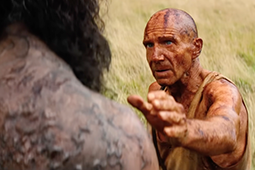


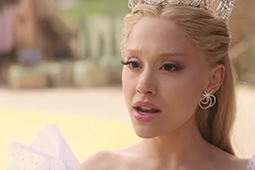
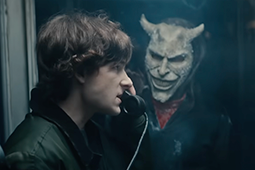
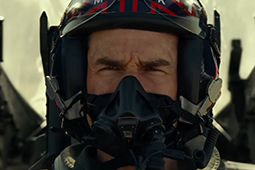
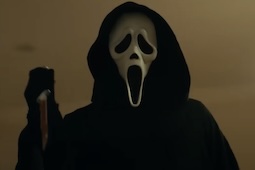
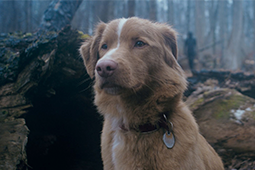
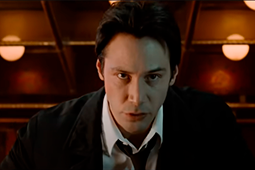
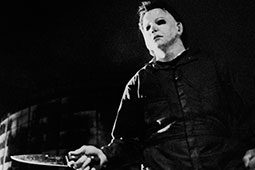


.jpg)
.png)






